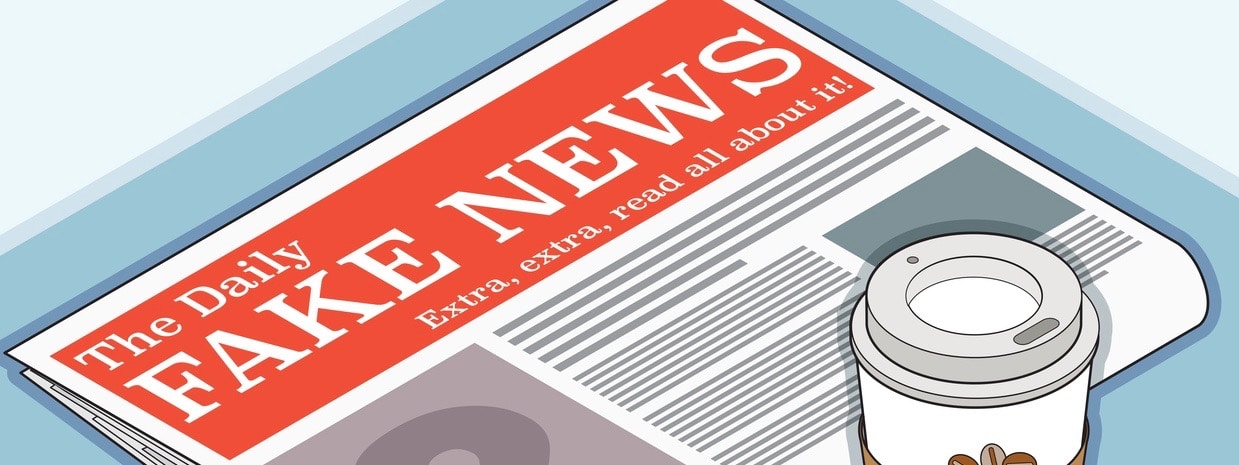We have all heard—and likely used—the term “fake news” ad nauseam now. Yet, how often do we stop to consider the implications?
John McCain wrote a powerful op-ed for the Washington Post in January of this year titled “Mr. President, stop attacking the press.” In it, he speaks to what has become a “weaponization” of the term.
One of his most powerful and pointed comments underscores exactly what this weaponization entails:
“The phrase ‘fake news’—granted legitimacy by an American president—is being used by autocrats to silence reporters, undermine political opponents, stave off media scrutiny and mislead citizens.”
What exactly is “fake news”? When we casually throw this term around, even in a moment of critique, do we understand what we are saying? Even more important, do we recognize how this becomes a part of the problem?
This phrase is inherently flawed and dangerous. And it has become a catalyst for a host of consequences.
Recognizing what’s at stake
The charge of “fake news” enables a sweeping devaluation of the media. It empowers individuals to dismiss anything they don’t like or don’t want to believe as “fake.” It drives each of us to further cultivate our own stunted garden of confirmation bias—tending solely to those things we already believe. And it fuels sensationalist social media sharing with little regard for a link’s source or credibility.
What McCain warns about is not theoretical. It is happening now. I have the privilege of working with PR agency leaders from around the world via PRGN (the Public Relations Global Network). And from countries across the globe, I am hearing reports of these types of threats to journalistic independence and safety.
This is why the concept of “news literacy” is far from an academic exercise. It speaks to embracing education on how “news” is made, the vital role of a free press in any democracy, and the differences between a news story versus an op-ed versus an advertisement. And it also speaks to how to inoculate yourself against straight-out fraud, manipulation and propaganda.
Public relations professionals at all levels should care deeply about this issue. Our work, in all its best forms, cannot function without an open, vibrant and, yes, sometimes messy media landscape.
Yet while many of us decry the current situation, I’m not certain our industry has fully grasped the nuances or what is really at stake here.
Fighting a public health crisis
Alan Miller, founder of The News Literacy Project, calls the epidemic of “fake news” a public health crisis. I find that to be a powerful—and empowering—way of understanding what can feel like an intractable challenge.
As a child of the 1970s, I understand this context. I grew up in an age where significant public health campaigns tackled issues deeply rooted in the behaviors of a population. Smoking. Seatbelts. Saving water and energy. Littering. Fire prevention. I was one of the young, impressionable minds reached by the combined efforts of the public, private and non-profit sectors. The goal was to help us help ourselves in living better – both as individuals and as a society.
Considering this issue as a public health crisis gives us a framework for combating it – one rooted in education and action. What does the general population need to know and understand? And what concrete actions can we then positively promote to change behavior?
My firm, CooperKatz, has been a proud participant with the PR Council in supporting The News Literacy Project. Based on this work, below are examples of education and action that we can all vow to undertake in our professional and personal lives.
Education: Get clear on what “fake news” is, and is not
“Fake news” is a specific misinformation strategy. Many people conflate rumors, hoaxes, false claims, mistakes in journalism or even simply a news story they don’t like as “fake news.” But this is not accurate. It obscures the issue and ends further inquiry.
The first thing we can all do as PR professionals is be more precise in our language. Is a given link a doctored fraud? Is it a racist or xenophobic screed dressed up as “news”? Is it propaganda or misinformation? Is it spam designed to make a buck on clicks? Go deeper and call things out for what they actually are.
Action: Adopt and teach these seven tips to change behavior when it comes to what we read, hear and share
- Check your emotions. Don’t let misinformation hijack your rational mind.
- Determine the purpose of what you are reading or hearing. What’s really behind it? What is it trying to get you to do – and why?
- Be aware of your own biases. Even the most media-savvy among us are vulnerable to confirmation and unconscious biases.
- Consider the message. It is too perfect? Does it claim to peddle a “secret” no one else knows?
- Search for more information and cross-check whether something has already been debunked as false—or confirmed by multiple credible sources.
- Go deeper on the source and who is behind it.
- Then go deeper on the content itself—including reverse image search or independently verifying specific facts cited in a story.
I encourage a visit to The News Literacy Project website to learn more. And I equally encourage us all to get smarter, bolder and louder on this issue. The more accountable we are as an industry to education and action, the more informed and “healthy” we will be as a society.



